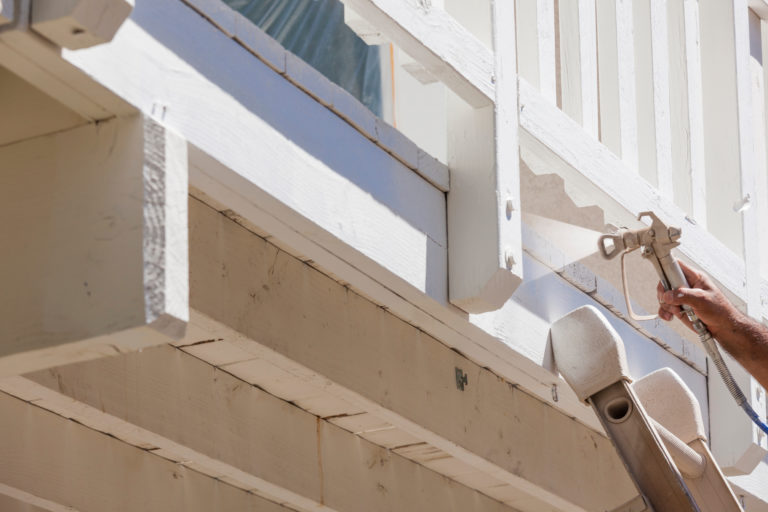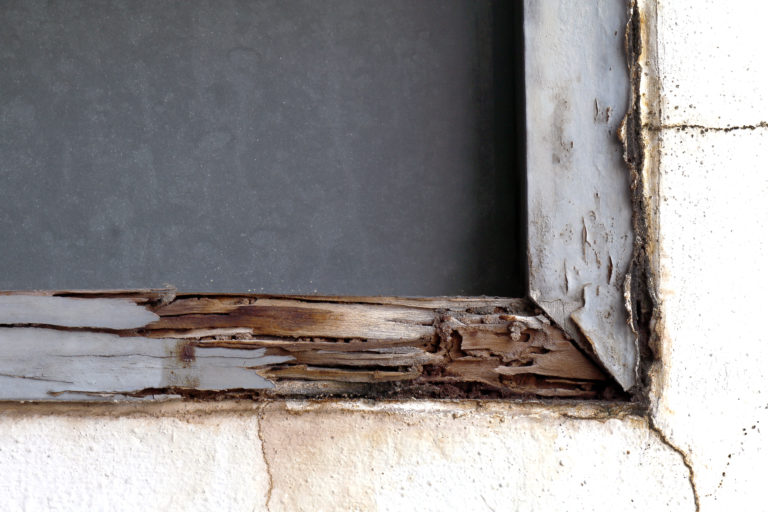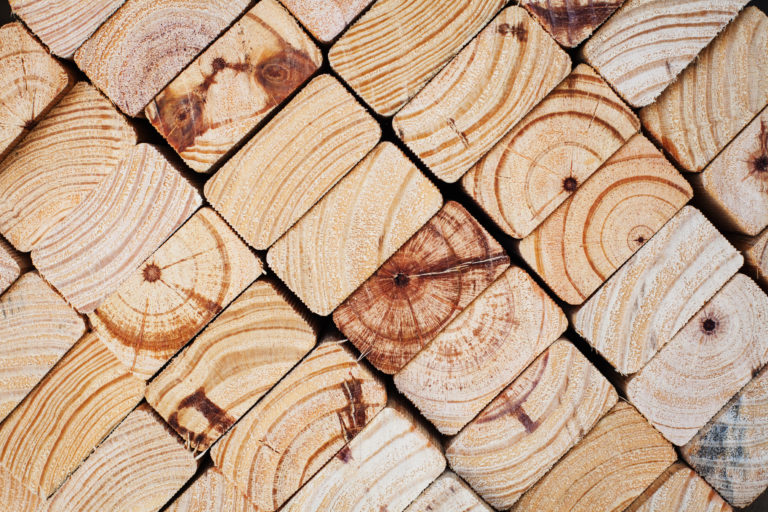We all know that prevention is better than cure.
And when it comes to termites, nothing can be more true.
Termites are one of the most difficult pests to identify and eliminate.
They are sneaky and can go unnoticed for years.
Often, you won’t know you have a termite infestation until they’ve done significant damage.
That said, there’s plenty of things you can do to protect your home from these notorious household pests.
In this article, we’ll go over the different ways you can treat wood to prevent termites.
1. Use Pressure Treated Wood
Pressure-treated wood is resistant to decay, termites and other wood-eating insects.
It’s gone through a process that uses high pressure to force preservative agents deep into the pores of the wood.
These chemical solutions slow down natural decay and protect the wood against fungus, moisture, and termites.
Pressure-treated wood is a much cheaper alternative to high-quality, termite repellent wood, such as redwood.
For instance, a 1.5″ x 11.5″ pressure-treated pinewood only costs around $2.50 per square foot, whereas redwood costs you about $4.
Because it’s resilient to molds and rotting, pressure-treated wood is ideal for outdoor projects like wooden decks, fences, and gazebos.
You can also use them in your bathrooms or kitchens.
Keep in mind that pressure-treated wood is termite-resistant, not termite-proof.
If there is any crack on it, termites can bypass the external barrier and enter the wood. While this is rare, it can happen.
Still, some protection is better than none.
And, despite its flaws, using pressure-treated wood is undoubtedly a great strategy to keep termites away.
For the most natural and tested chemical against termites, wood treated with borates has been proven to be extremely effective.
2. Apply Bora-Care to Untreated Wood
Bora-Care is a wood preservative used to prevent and control termite infestations.
You can apply it to any wood that has no paint or sealants.
Boracare is excellent because it seeps deep into the wood when applied.
Once absorbed, Boracare will stay on the wood for its lifetime as long as it is sealed and coated.
To use BORA-CARE, dilute five gallons of water for every one gallon BORA-CARE.
Next, transfer the solution to a pressurized spray bottle and spray it to any exposed wood.
Some common areas where you might have unexposed are the attic, roof, basement, porches, deck, shingles, or siding.
It is important to note that bora-care is only effective on exposed wood.
That’s because the chemical can not penetrate the painted or coated wood.
To apply bora-care to painted wood, you will need to drill and inject the bora-care into the wood.
For the best results, drill holes every 6 to 8 inches and inject for 2-5 seconds in each hole.
When using Bora-care, always wear safety equipment, including gloves, masks, long clothing, and goggles.
3. Apply a Fresh Coat of Paint and Primer

Termites won’t eat through paint.
But they may get into a painted wood if the paint is worn-off or not very well done.
If there are pieces of the wood that are bare, termites can crawl through it and penetrate the wood.
To keep termites away, apply a fresh layer of paint to your home.
For added protection, add an oil-based primer on top of the paint.
Priming makes the paint more durable and resilient to termite infestation.
4. Replace Rotted or Molded Wood

Rotting wood is susceptible to termite infestation because they are easy to penetrate and consume.
So, to keep termites away, make sure to replace any damaged, rotting, or molded wood.
After replacing the wood, I recommend you treat the new lumber with insecticide for extra protection.
You can do this by applying a layer of termiticide or bora-care to all sides of the area of the new wood.
5. Use Wood that Naturally Kills and Repels Termites

Some woods contain chemicals that are toxic to termites.
Here’s a list of them:
- Redwood
- Cedar
- Teak
- Peruvian Walnut
- Honduran mahogany
- Alaska yellow cedar
While termites will eat the wood mentioned above, they will not be able to thrive on them.
In this study, Redwood was shown to produce a 100% mortality rate on termites after three weeks. It also showed Cedar is capable of producing a 50% mortality rate on termites.
And in this study, teak, Peruvian Walnut, Honduran, Mahogany, and Alaska Yellow Cedarwood were shown to have a 75% mortality rate on termites.
The study also shows that termites have a higher survival rate when not fed than on a teak diet.
Most of these woods are resistant to rotting and decay. Making them even more ideal for termite prevention.
For example, Redwood and teak are commonly used outdoors because they are less prone to mold and decay.
The one disadvantage of the woods on this list is that they are generally more expensive than other types of wood.
For example, a 1.5″ x 11.5″ wood will cost around $4 for Redwood, whereas it will only cost about $1.75 for pinewood.
6. Replace wood with Composite Wood
Composite wood is impervious to termite infestation.
That’s because it does not have enough cellulose the termites need to survive on.
Composite wood is not 100% wood. It’s a combination of wood fiber, plastic, and a binding agent.
It’s a widely popular alternative for building wooded structures, especially for outdoors.
Composite decks won’t rot and are more durable than wood.
That said, composite wood can’t replace wood in some scenarios.
Composite wood is not as durable as wood.
As such, you can’t use it to support framing or anything load-bearing.
Composite wood also tends to be more expensive than traditional wood.
7. Avoid Using Palatable Foods For Termites
Like us, termites prefer certain foods over others.
They find some types of woods, such as teakwood and redwood, to be unappetizing.
And they perceive others to be particularly satisfying.
In one study, they show that termites especially prefer Douglas Fir and Southern Pinewood.
As such, the termites consume them twice as fast compared to other woods.
Other types of wood that termites love are Oak, Spruce, and Hemlock.
While avoiding these woods will not necessarily keep termites away, it will prevent termites from destroying your home faster than they should.
Frequently Asked Questions (FAQ)
Does Paint Prevent Termites?
Yes. Paint is a great way to prevent termites.
Termites won’t eat through paint.
They may get into a painted wood if the paint is damaged or not very well done.
If the paint is damaged, termites can crawl through it to penetrate the wood.
To keep termites away, make sure to maintain the paint in your home.
For added protection, add an oil-based primer on top of the paint.
Priming makes the paint more durable and resilient to termite infestation.
Do termites eat paint?
No. Termites do not eat paint.
Neither will they eat through the paint from the outside.
But they may get into a painted wood if the paint is chipping or damaged.
If there are spots on the wood that don’t have paint, termites will crawl through it to penetrate the wood.
Also wood that is damaged, rotting, or decaying is more likely to have termites chew thorough the paint to reach the wood.
Once inside, they will commonly chew through the paint to create kick out holes or to make exit points for their galleries.
What Can I spray on wood to prevent termites?
One of the best sprays against termites is Bora-Care.
Bora-Care is a wood preservative used to prevent and control termite infestations.
You can apply it to any wood that has no paint or sealants.
Boracare is excellent because it seeps deep into the wood when applied.
Once absorbed, Boracare will stay on the wood for its lifetime as long as it is sealed and coated.
Other good options to spray on your wood are Coppercoat, Termidor, and Penishield.
How Long does treated wood prevent termites?
If you use Bora-Care to treat wood, the barrier should last a lifetime as long as it is sealed and coated.
That’s because it seeps deep into the wood when applied.
Once absorbed, Boracare will stay on the wood forever.
Can painted wood be treated?
No.
Termiticide treatments only work on exposed or unfinished wood.
They don’t work on painted wood because the paint prevents the chemicals from getting absorbed.
Is borate treated wood safe?
Borate exhibit low toxicity to humans and other pets.
But they are deadly termites.
A study found boric acid can eliminate termites on wood between 70% and 89% after ten days.
Keep in mind that for boric acid to be effective, it needs to seep into the wood evenly.
To make sure the wood absorbs the acid well, apply several layers to all sides of the forest.
One of the most effective borate products used to kill termites is bora-care.
To use Bora-care mixed it with water and sprayed it with a pressurized spray.
Spray two coats on the surface to ensure that the borate reaches the center of the wood.
Once the second coat is dry, apply a sealant to the treated wood.
The borate solution will soak into the wood, and any termite that eats the wood will die.
The borate solution stays active for the lifetime of the wood, which means you don’t need to reapply.
Is pressure-treated wood safe to use indoors?
Pressure-treated wood is safe for indoor use.
While pressure-treated wood use to contain dangerous levels of harmful chemicals in the past, that is not true today.
New regulations have made pressure-treated wood much safer to use indoors.
One of the best options for pressure-treated wood are ones treated with borate. Borate kills termites effectively and safe to use indoors.

What about MDF, can it be treated to prevent termites?